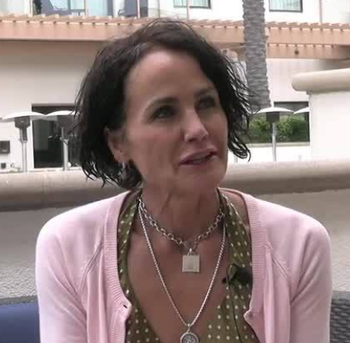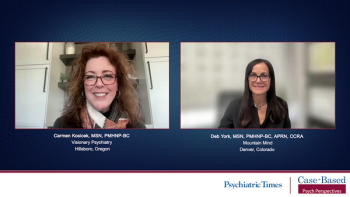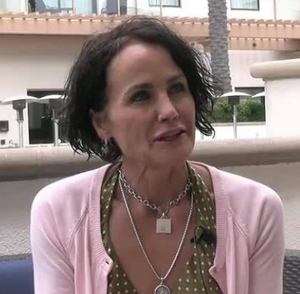
Deb York, PMHNP-BC, sheds light on postpartum psychiatry at the conference.

Deb York, PMHNP-BC, sheds light on postpartum psychiatry at the conference.

Panelists discuss how faster-acting treatments like zuranolone might improve patient outcomes and quality of life, the initial signs to monitor for assessing effectiveness, barriers to accessing such therapies in underserved populations and strategies to increase accessibility, approaches to ensuring safety while addressing distress in patients with intrusive thoughts, effective strategies for managing sleep issues in postpartum depression (PPD), advice for the psychiatry community when treating PPD, and how to tailor advice for clinicians working with underserved populations.

Panelists discuss when to adjust the dosage of current therapies like sertraline vs considering alternative treatments and the factors that guide these decisions, as well as whether treatments with rapid onset, such as zuranolone capsules or brexanolone intravenous (IV) infusion, would be appropriate for cases like Sarah’s, and what factors would influence the choice between these options.

Panelists discuss the case of Sarah, a 29-year-old woman with a history of major depressive disorder who is struggling with postpartum adjustment and increasing isolation, highlighting the challenges of transitioning into motherhood, family dynamics, and the potential genetic and environmental factors influencing her mental health.

Panelists discuss early signs of a positive response to treatment in postpartum depression (PPD), the specific symptoms to monitor, obstacles to accessing timely care in underserved populations, the role of family and community resources in recovery, key competencies for clinicians in addressing urgent PPD cases, and essential elements of a comprehensive, patient-centered treatment plan that balances medication, therapy, and support resources.

Panelists discuss the strategic decision-making process for choosing among selective serotonin reuptake inhibitors (SSRIs), rapid-onset treatments like zuranolone, and nonmedication therapies for postpartum depression (PPD), emphasizing the importance of treatment speed, severity of symptoms, and patient preferences.

Panelists discuss how to diagnose postpartum depression (PPD) promptly using tools such as standardized screening questionnaires, especially in busy or resource-limited settings, and explore strategies to enhance PPD screening in underserved and minority populations in which symptoms may be underreported, while also considering the role of the case study patient’s family history in identifying her PPD symptoms.

Panelists discuss how specific symptoms, such as persistent sadness, emotional numbness, and disconnection from the baby, help distinguish postpartum depression (PPD) from postpartum anxiety or “baby blues,” and how to approach assessing a patient such as Emily, who is experiencing these symptoms for the first time despite previous pregnancies.

Panelists discuss how the recent FDA-approved treatments for postpartum depression (PPD), including zuranolone and brexanolone , offer new options for rapid symptom relief and improve the management of severe PPD cases.

Panelists discuss how postpartum depression (PPD) is recognized and managed, highlighting current diagnostic practices, treatment options, and the role of emerging therapies in improving outcomes for affected individuals.

Published: July 11th 2025 | Updated: